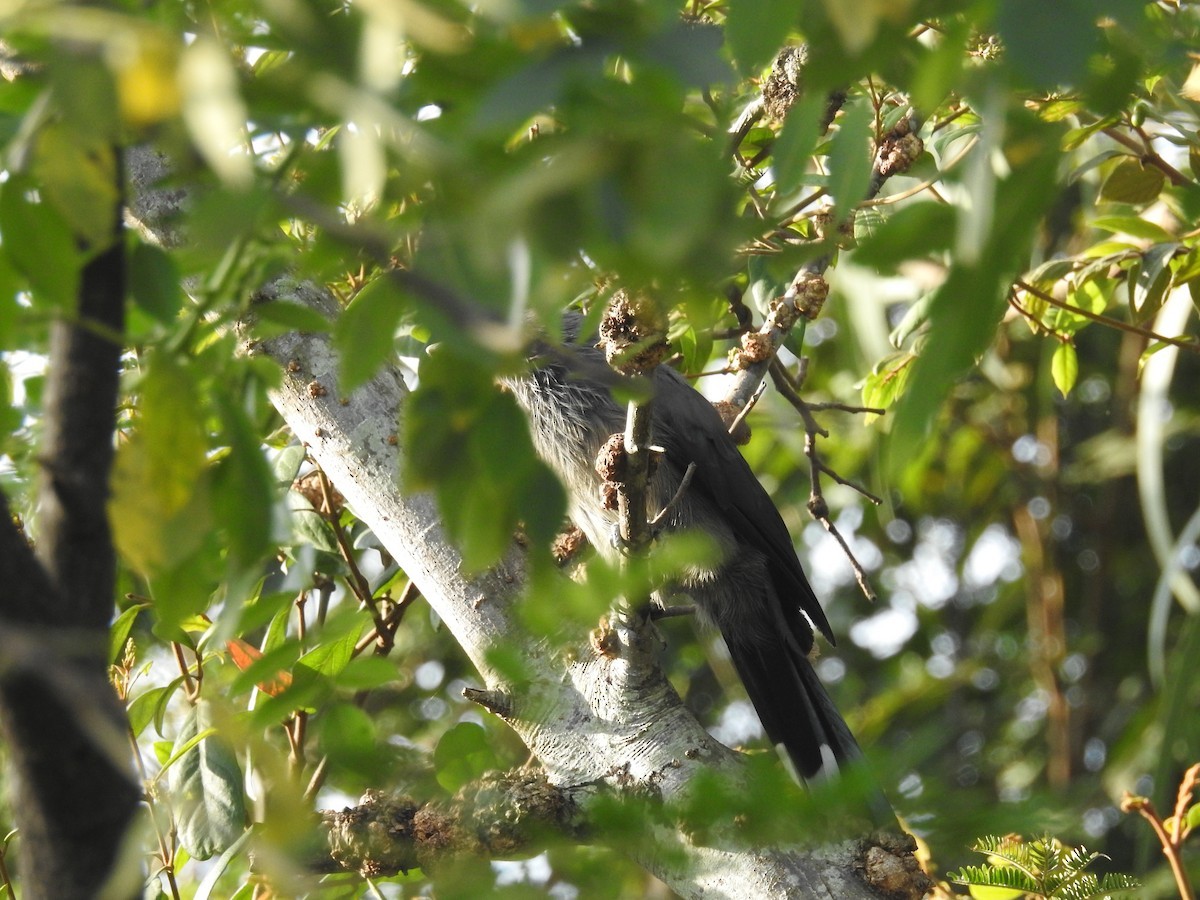Blue-faced Malkoha
A species of Rhopodytes Scientific name : Phaenicophaeus viridirostris Genus : Rhopodytes
Blue-faced Malkoha, A species of Rhopodytes
Botanical name: Phaenicophaeus viridirostris
Genus: Rhopodytes
Content
Description General Info
 Photo By Ashwin Viswanathan
Photo By Ashwin Viswanathan Description
A largish species at 39 cm, its back and head are dark grey with an oily green or blue gloss, and the dark tail has graduated feathers tipped with white. The belly is pale ochre to grey. The feathers of the chin and throat are branched (unlike in Phaenicophaeus tristis) with the branched tips being pointed and slightly yellowish giving the throat a streaked and spiny appearance. There is a large blue patch around the eye, with a white fringed red iris, and the bill is apple green. The sexes are indistinguishable by external appearance. Birds from Sri Lanka have a broader white tip to the tail feathers. Malkohas are generally very silent but will sometimes produce a low croaky kraa when flushed. Young birds have dull and non glossy upperparts and some brown feathers in their wing. They nest within a thorny bush, building a thick platform of twigs lined with green leaves and lay a clutch of two, rarely three, chalky white eggs. The breeding season is somewhat extended and unclear but many nest have been taken from March to August. Two out of 31 specimens trapped in a study were found to have ticks of the genus Haemaphysalis spinigera. The blue-faced malkoha takes a variety of insects, caterpillars and small vertebrates. It usually forages in the undergrowth. 
Size
39 cm
Nest Placement
Tree
Feeding Habits
Blue-faced Malkoha primarily consumes insects, caterpillars, and other small invertebrates, supplementing with lizards and fruit. They forage in thick foliage, often alone or in pairs, meticulously searching for prey.
Habitat
The blue-faced Malkoha is commonly found in various types of dense vegetation, including secondary woodlands and thorny scrub and bush regions. These habitats often feature the presence of specific plant species such as Euphorbia antiquorum. Such environments provide the structural complexity that blue-faced Malkoha requires for foraging and nesting, primarily located in lowland areas and extending into adjacent hilly regions.
Dite type
Omnivorous
General Info
Feeding Habits
Bird food type
Distribution Area
The blue-faced malkoha is found in peninsular India south of Baroda (the Surat Dangs) and Cuttack in a range of habitats from semi-evergreen, dry deciduous and open scrub forest. In Sri Lanka it is restricted to the plains. 

 Photo By Ashwin Viswanathan
Photo By Ashwin Viswanathan Scientific Classification
Phylum
Chordates Class
Birds Order
Cuckoos and Relatives Family
Cuckoos Genus
Rhopodytes Species
Blue-faced Malkoha